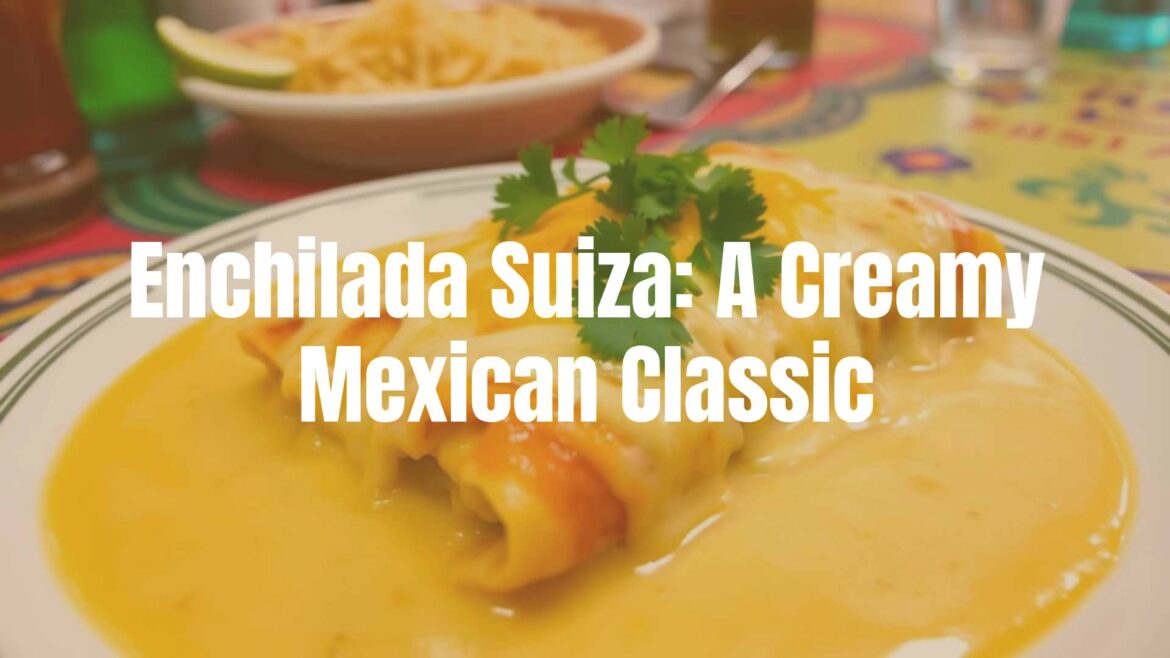Enchilada Suiza: Mexican Comfort with European Flair
What Sets Enchilada Suiza Apart?
Enchilada suiza stands out in Mexican cuisine for its signature creamy, cheesy sauce—a departure from the more common red or green salsas found on traditional enchiladas. Characterized by a velvety texture, luscious dairy-rich flavor, and baked golden top, this dish harmonizes the warmth of Mexico’s staple foods with an unmistakable touch of Swiss-inspired decadence.
Origins and Culinary History
The word “suiza” means “Swiss” in Spanish, hinting at the European influence integrated into this Mexican favorite. Enchilada suiza was popularized in the early 20th century, especially by the iconic Sanborns café in Mexico City. The dish was inspired by Swiss immigrants and the era’s fascination with creamy sauces. Incorporating dairy products like cream and cheese, which aren’t typically central in indigenous Mexican cooking, the enchilada suiza beautifully exemplifies Mexico’s culinary adaptability and evolution.
Essential Ingredients and Typical Preparation
At its core, an enchilada suiza is a corn tortilla rolled around a filling—commonly shredded chicken, though pork or vegetables appear as alternatives. The defining trait is the sauce: a blend of green tomatillo salsa and rich Mexican crema (or sour cream), creating a silky, pale-green covering. Generous quantities of melted cheese—traditionally queso Oaxaca, Chihuahua, or Monterey Jack—top the dish before it is baked until bubbling and slightly golden. The result is a plateful of tender, creamy, and mildly tangy enchiladas, where the subtle heat of the salsa verde melds with mellow dairy flavors.
Regional Significance and Evolution
While enchiladas are found all over Mexico, the suiza variation is most commonly associated with central urban areas like Mexico City, where international influences shaped local menus. The dish reflects Mexico’s cosmopolitan appetite, skillfully blending European tastes with indigenous staples. Though now available throughout the country—and a beloved feature in Mexican restaurants abroad—its origins remain a clear example of Mexico’s openness to culinary innovation.
Popular Variations and Ingredient Swaps
Chicken is the classic protein used, yet fillings may also include pulled pork, ground beef, or sautéed vegetables for a vegetarian rendition. Tomatillo-based salsa verde forms the foundation of the sauce, though some modern versions use a blend of green chilies, avocados, or even roasted poblanos to tweak the flavor. While Mexican crema is preferred for authenticity, sour cream or crème fraîche are common substitutes outside Mexico. Cheeses can vary as well—seek out Oaxaca or Chihuahua for stretch and melt, but Monterey Jack or mozzarella work nicely in their absence.
Serving Suggestions and Pairings
Enchilada suiza is at its best when served piping hot from the oven, topped with fresh cilantro, thinly sliced onions, and perhaps a few radish rounds for crunch. Classic accompaniments include Mexican red rice and refried beans on the side. For drinks, pair with a crisp Mexican lager, a chilled glass of horchata, or even a tangy margarita to balance the dish’s creamy richness.
Summary
Enchilada suiza brings together the comfort of corn tortillas and the bright, fresh flavors of salsa verde with the sumptuous appeal of cream and cheese. Its origin story and distinctive preparation make it a standout among enchilada varieties, beloved by those who appreciate the melding of global influences in Mexican cuisine.


